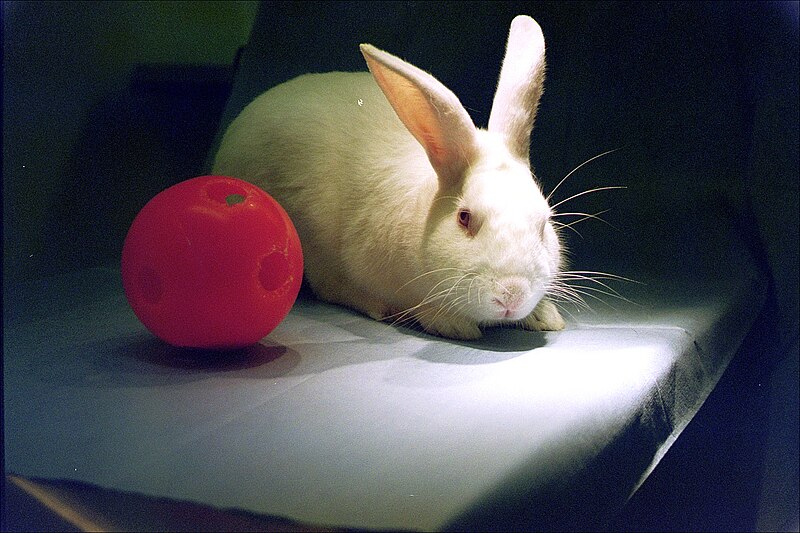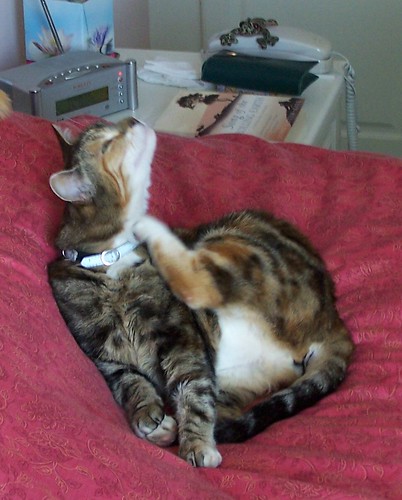I put off writing this article for a long because I feared that people would judge me as a bad pet parent. I finally decided to write it when I heard countless other “my dog ate” stories and came to terms with the fact that accidents do happen.
“You think your dog ate what?” Those are the words I heard from my vet over the phone when I was trying to explain I thought my shepherd mix Gatsby may have eaten some pins from a pin cushion.
Let’s back up to the beginning. I got home from work around 6 and started on dinner. Something shiny on the kitchen floor caught my eye. It was a pin. I didn’t think much of it at first, thinking it may have fallen off of some clothing I had recently purchased. Fast forward a few hours. We were returning from our evening walk when I spotted a toy I didn’t recognize in Gatsby’s crate. I picked it up and my heart stopped. It was the pin cushion from the sewing box.
To be honest, my first reaction was “There’s no way he ate any, they appear to all still be on the cushion.” Despite my denial I checked his mouth and peered down his throat. No blood, no needles, nothing abnormal. He was also acting normally. I suddenly remembered the pin in the kitchen and started searching for more pins. Immediately I knew that there was going to be a problem. I was finding pins left and right. Some were broken and some were bent. Even thought my denial still persisted (who eats pins, right?) I called my vet. She instructed me to go to the emergency pet hospital for x-rays.
throat. No blood, no needles, nothing abnormal. He was also acting normally. I suddenly remembered the pin in the kitchen and started searching for more pins. Immediately I knew that there was going to be a problem. I was finding pins left and right. Some were broken and some were bent. Even thought my denial still persisted (who eats pins, right?) I called my vet. She instructed me to go to the emergency pet hospital for x-rays.
At this point I was still calm, steadfastly denying to myself that either of the dogs had actually eaten any of the pins, but better safe than sorry. They took the dogs back for x-rays and then the vet came to speak with me. She gave me the good news first: Barret was free and clear, no pins in his belly. On the other hand, Gatsby had eaten enough pins for the both of them. From there almost everything else is a blur. The x-ray image was frightening. A cluster of what I later learned to be 11 pins were sitting in his stomach. One had already made its way toward the intestines.
Because of the sheer number of pins he had ingested surgery was his best option. If we took the “wait and see what passes” approach the damage could have been irreversible. I was told when a dog has ingests pins, and it is less than 3, they will generally pass without an issue with monitoring. I was astounded to learn that this wasn’t the first pin-extraction my vet had performed! I would do anything for my “kids” so I signed the papers, sent him into surgery and went home to wait.
 It was about 2 AM when the vet called to let me know he was out of surgery and waking up. They were only able to find and remove 9 pins despite multiple x-rays taken during surgery. I was to pick him up from the hospital and take him to my regular vet in the morning. He was released later in the day with strict dietary restrictions, medications, and instructions. I was also charged with the unpleasant task of dissecting any bowel movements to be sure the last 2 pins made it out safely.
It was about 2 AM when the vet called to let me know he was out of surgery and waking up. They were only able to find and remove 9 pins despite multiple x-rays taken during surgery. I was to pick him up from the hospital and take him to my regular vet in the morning. He was released later in the day with strict dietary restrictions, medications, and instructions. I was also charged with the unpleasant task of dissecting any bowel movements to be sure the last 2 pins made it out safely.
The next few days we were still really worried about him. He had no interest in food and wasn’t going to the bathroom. After about a week I finally was able to find a food (scrambled eggs) that he would eat. We breathed a sigh of relief when we found the last pin in his stool a few days later. Despite the fact that he was still vomiting and was losing weight, the vet assured me that he would get back to normal soon, having endured a pretty invasive surgery it would just take time. After a few vet office visits and several different medications he was on the mend.
 The experience has taught me a few lessons, mainly that some dogs really can (and will) eat anything if given the opportunity. I was always very careful about leaving things out or leaving doors open before, but (lesson #2) dogs can be very sneaky. Finally, I learned that both my dogs are integral parts of my life and that when it comes down to the wire I would do anything to make their lives long, healthy, and happy.
The experience has taught me a few lessons, mainly that some dogs really can (and will) eat anything if given the opportunity. I was always very careful about leaving things out or leaving doors open before, but (lesson #2) dogs can be very sneaky. Finally, I learned that both my dogs are integral parts of my life and that when it comes down to the wire I would do anything to make their lives long, healthy, and happy.
So ends my tale of the canine pin cushion. If you have one, please feel free to share your own “my dog ate” story in our comments section.
 Two recent studies have highlighted the role that stress and boredom plays in pet behavior and health. Although carried out on research colonies of cats and rabbits, both contain important lessons for pet owners. Steps as simple as establishing a routine substantially reduced the pain associated with serious illnesses.
Two recent studies have highlighted the role that stress and boredom plays in pet behavior and health. Although carried out on research colonies of cats and rabbits, both contain important lessons for pet owners. Steps as simple as establishing a routine substantially reduced the pain associated with serious illnesses. That Pet Blog That Pet Place Pet Blog
That Pet Blog That Pet Place Pet Blog



 It’s important to safe guard your pet against pests that can carry deadly diseases like Lyme disease. However, it is also important to remember that these medications are still pesticides and should be handled with care. The EPA found that some dogs, usually smaller breeds, and cats could have potentially harmful reactions to spot-on flea and tick treatments. Reactions ranged from skin irritation to more severe medical conditions like seizures, and in a few cases, even death. Most of the reactions were caused by “overdose” or using too much of the topical product for the size of the pet. Reactions in cats were typically the result of exposure to a dog- specific formula, either accidentally or through incorrect usage of the product. While the EPA mainly investigated “spot-on” flea and tick treatments, they recommend using caution with all
It’s important to safe guard your pet against pests that can carry deadly diseases like Lyme disease. However, it is also important to remember that these medications are still pesticides and should be handled with care. The EPA found that some dogs, usually smaller breeds, and cats could have potentially harmful reactions to spot-on flea and tick treatments. Reactions ranged from skin irritation to more severe medical conditions like seizures, and in a few cases, even death. Most of the reactions were caused by “overdose” or using too much of the topical product for the size of the pet. Reactions in cats were typically the result of exposure to a dog- specific formula, either accidentally or through incorrect usage of the product. While the EPA mainly investigated “spot-on” flea and tick treatments, they recommend using caution with all  important if your pet is weak, elderly, sick, on medication, pregnant or nursing. You should also carefully read all instructions before applying flea and tick treatments, especially if you have not used the product before. When purchasing a flea and tick treatments be sure to know the current weight of your pets to select the correct product.
important if your pet is weak, elderly, sick, on medication, pregnant or nursing. You should also carefully read all instructions before applying flea and tick treatments, especially if you have not used the product before. When purchasing a flea and tick treatments be sure to know the current weight of your pets to select the correct product.

 The experience has taught me a few lessons, mainly that some dogs really can (and will) eat anything if given the opportunity. I was always very careful about leaving things out or leaving doors open before, but (lesson #2) dogs can be very sneaky. Finally, I learned that both my dogs are integral parts of my life and that when it comes down to the wire I would do anything to make their lives long, healthy, and happy.
The experience has taught me a few lessons, mainly that some dogs really can (and will) eat anything if given the opportunity. I was always very careful about leaving things out or leaving doors open before, but (lesson #2) dogs can be very sneaky. Finally, I learned that both my dogs are integral parts of my life and that when it comes down to the wire I would do anything to make their lives long, healthy, and happy. When we left off
When we left off  Kongs – I started out using empty marrow bones as makeshift
Kongs – I started out using empty marrow bones as makeshift